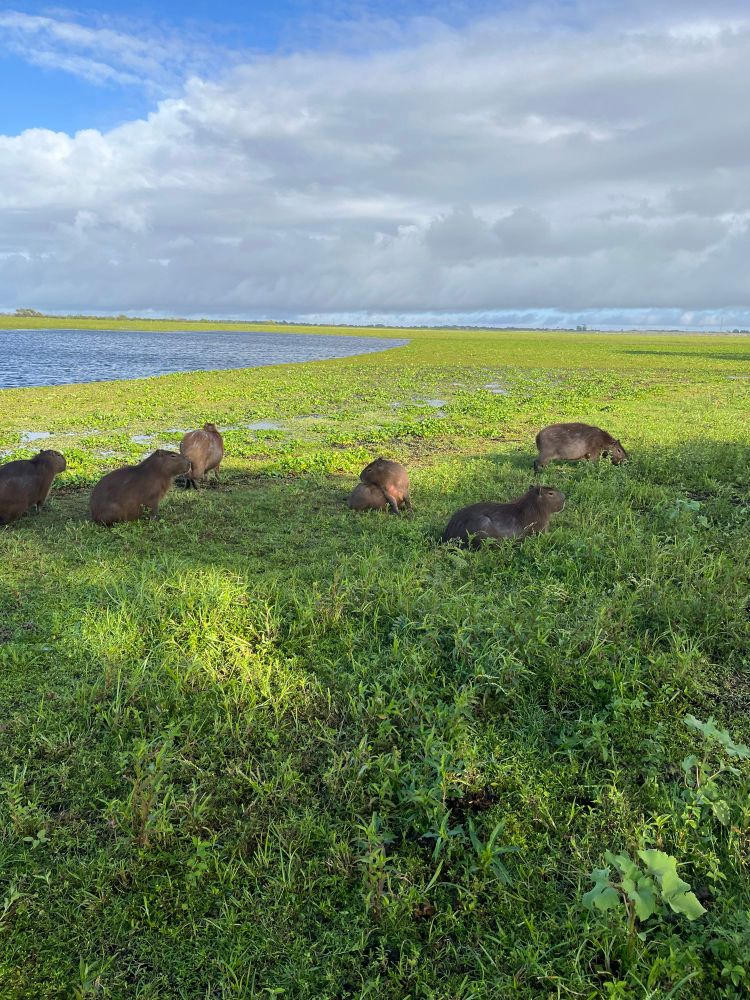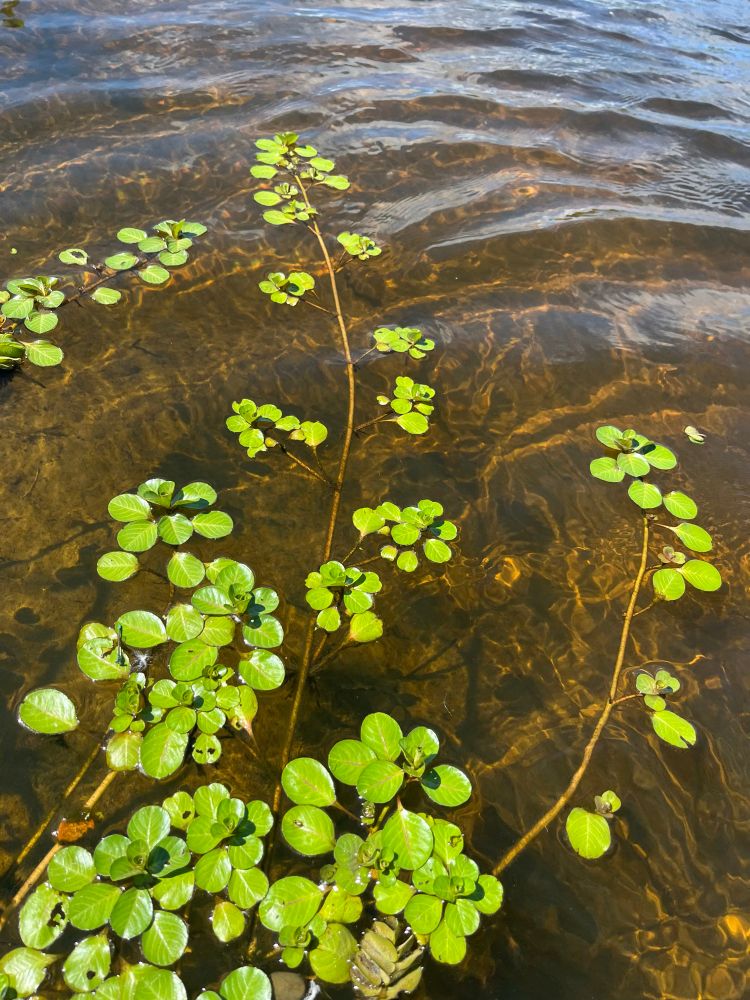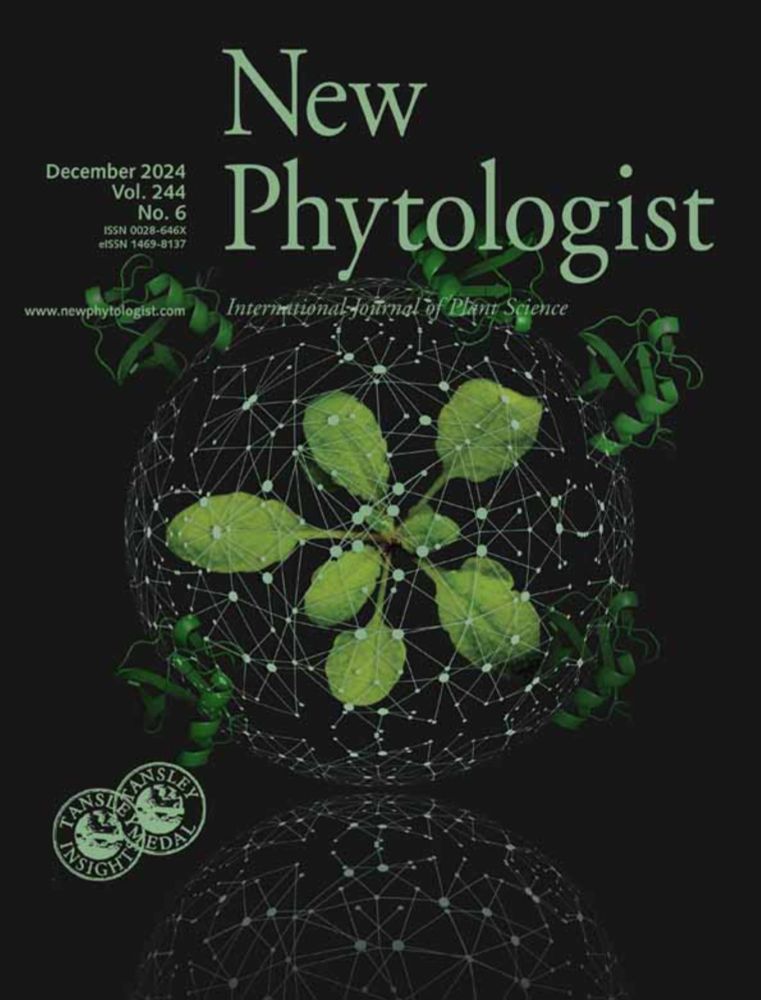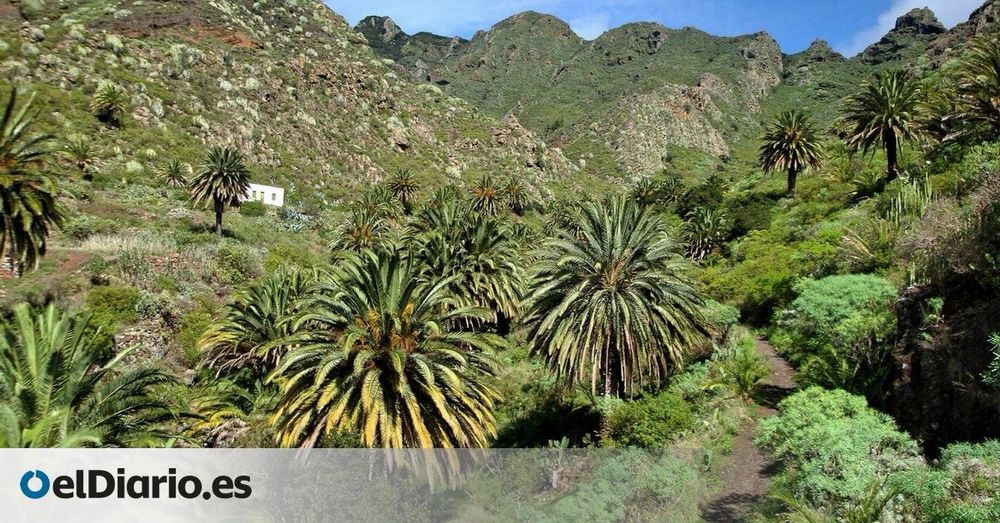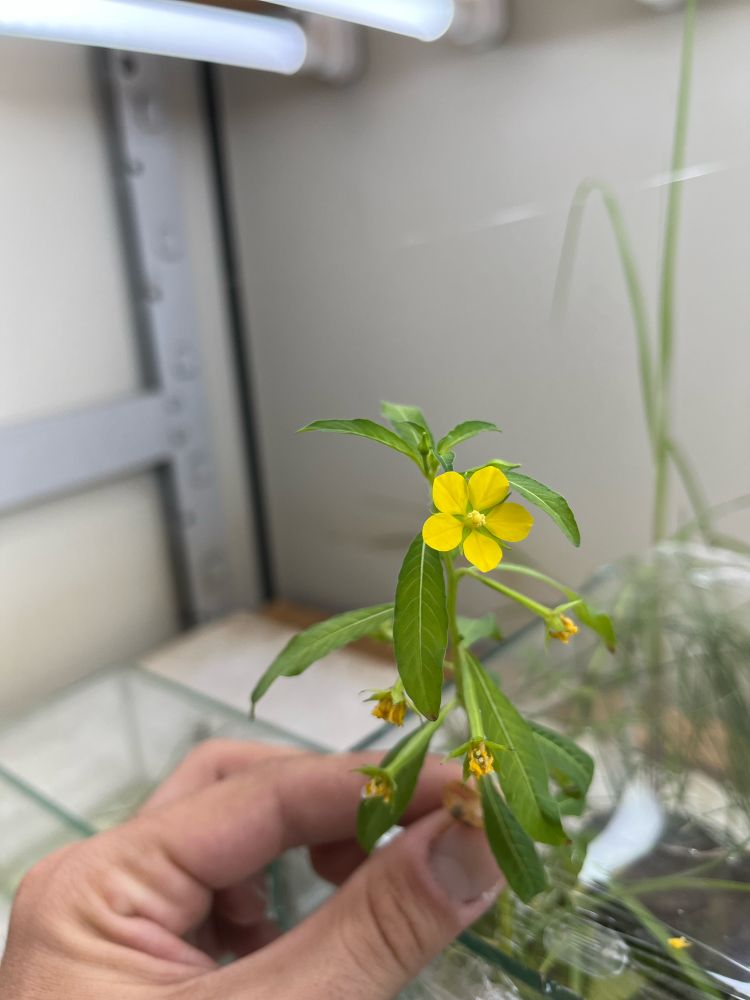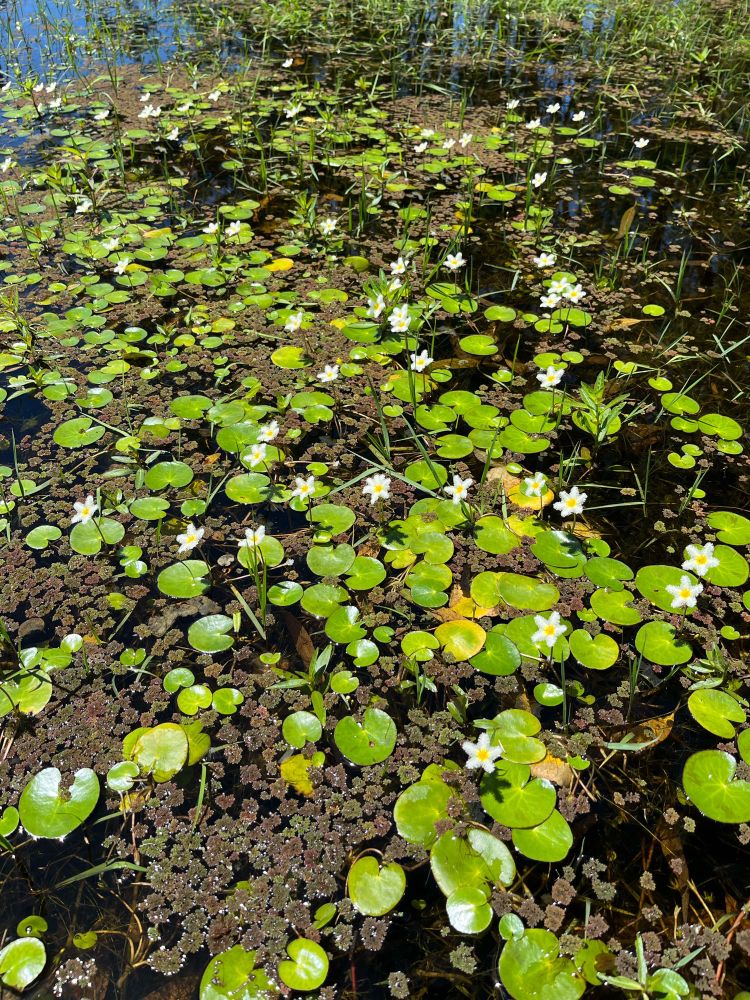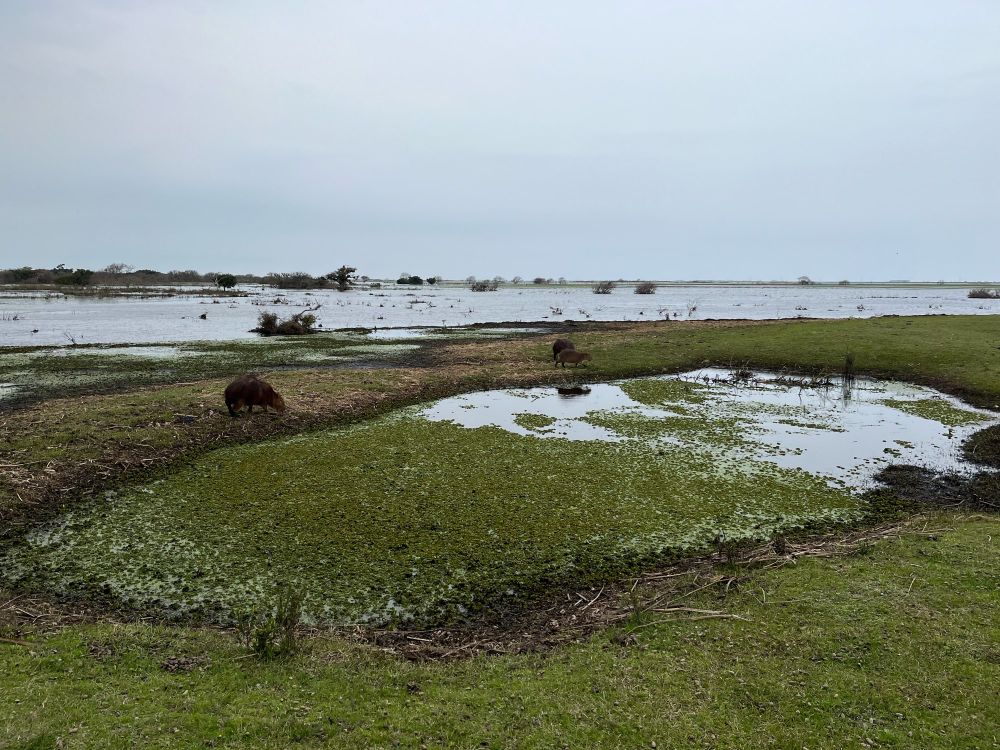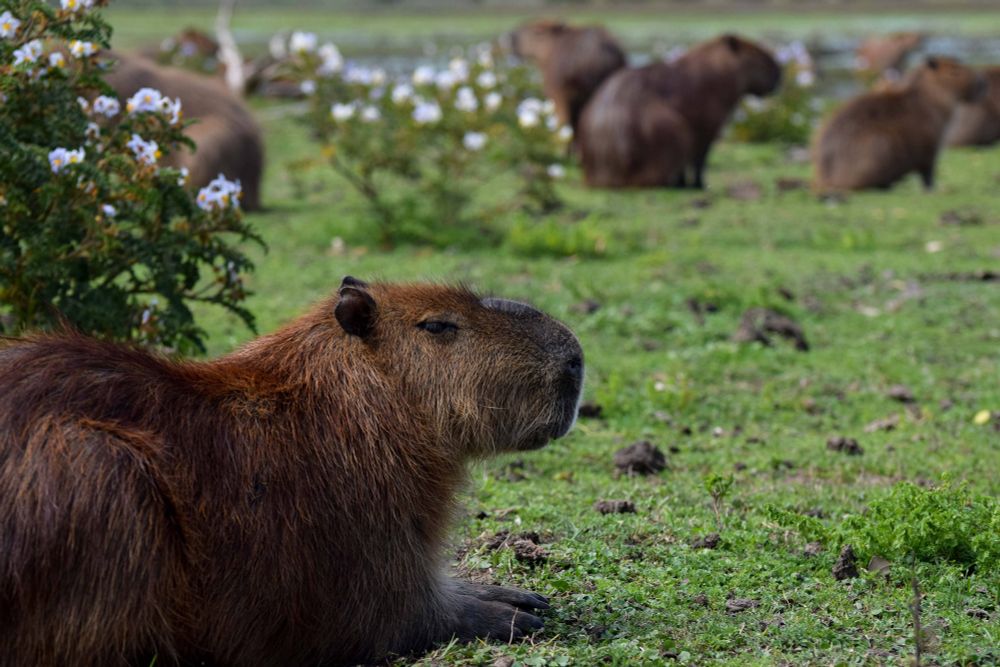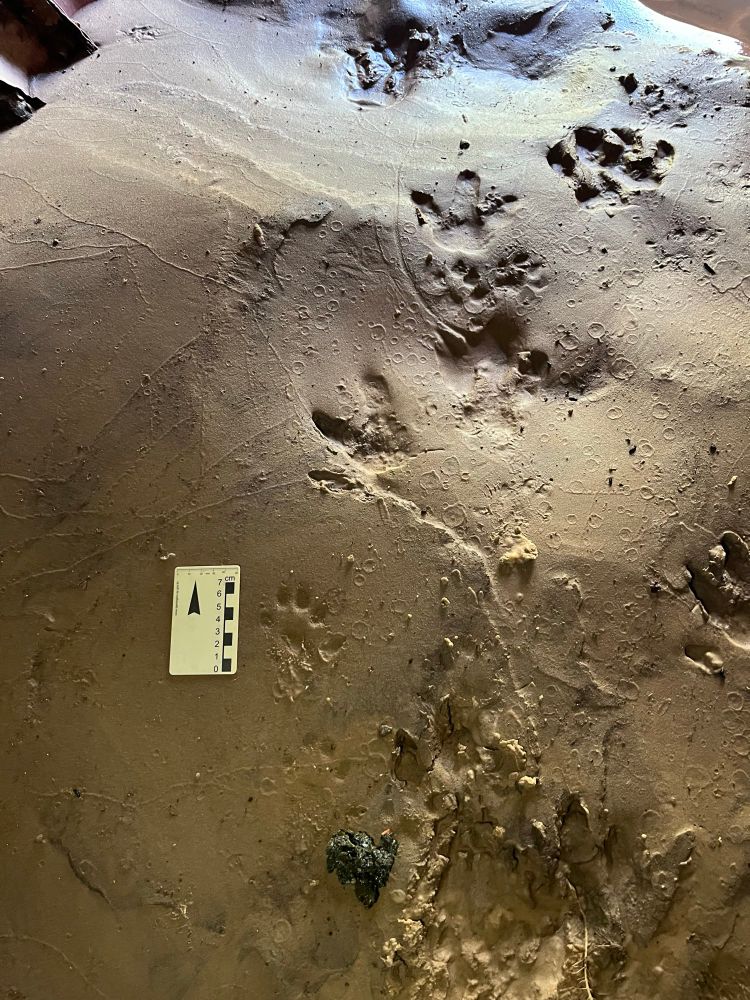
The image shows footprints of a neotropical otter (small, four-toed) alongside larger three-toed capybara footprints. In the lower section, there is an otter spraint (droppings).
On the track of the neotropical otter and capybaras.
20.04.2025 14:34 — 👍 1 🔁 0 💬 0 📌 0
I’m so happy to be back in the field, collecting data on these big guys in the Southern Brazilian wetlands of the Pampa biome for my thesis! 🌾
13.03.2025 15:33 — 👍 2 🔁 0 💬 0 📌 0
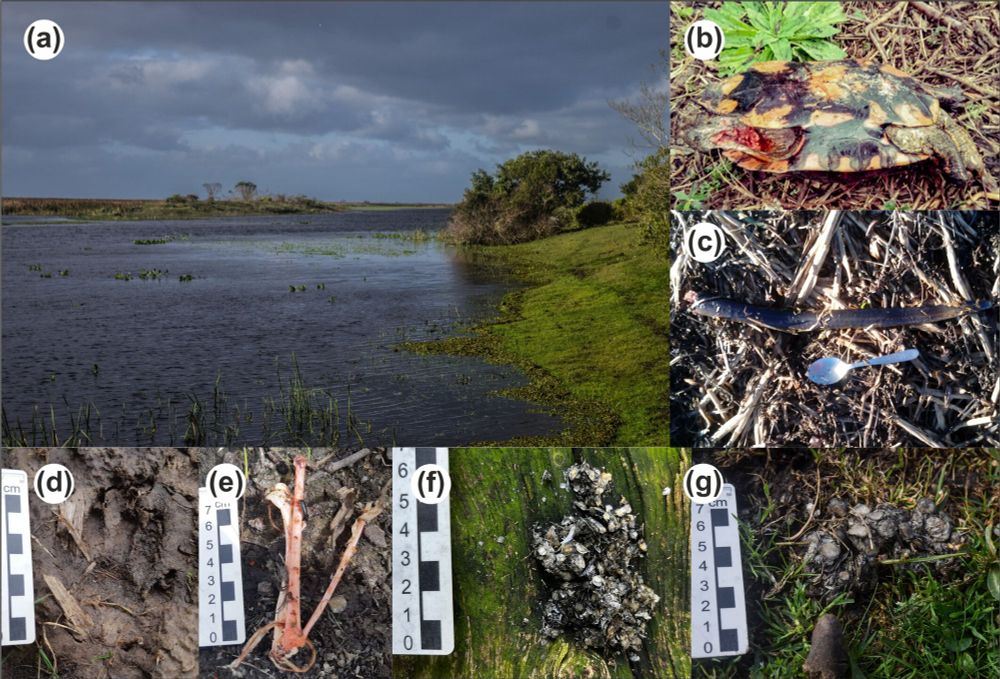
Site where the spraints were collected at the Taim Ecological Station (ESEC Taim) including neotropical otter prey remains and spraints (scale in cm). (a) Canal inhabited by otters. Otter vestiges: (b) Trachemys dorbigni preyed upon by otters , (c) Synbranchus marmoratus preyed upon by otters , (d) Neotropical otter footprint, (e) bird bones, and (f, g) Neotropical otter faeces (spraints) with numerous visible fish scales.
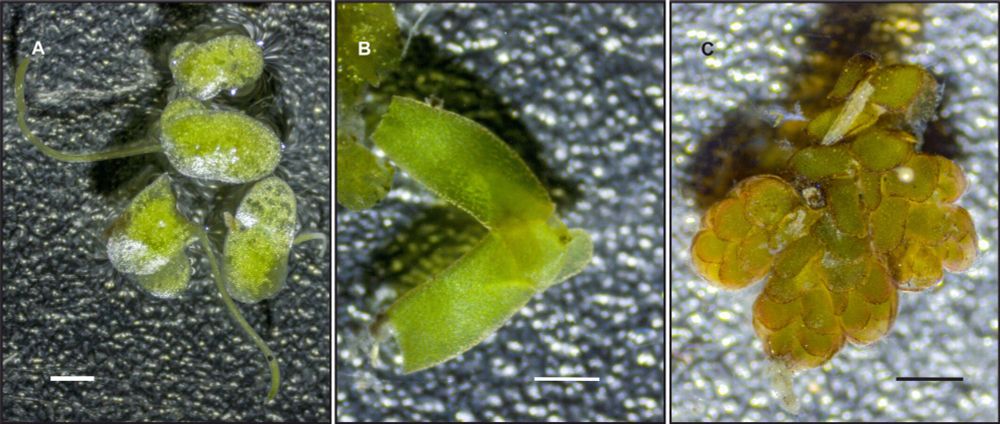
Examples of aquatic macrophyte specimens recovered from neotropical otter faeces. (A) Lemna minuta , (B) Wolffiella oblonga , and (C) Azolla filiculoides. Scale 1 mm.
Secondary dispersal of 4 ferns and 28 flowering plants by Neotropical otters in Brazil. "Diploendozoochory” occurs when propagules are ingested first by prey and then by otters. @freshwaterscience.bsky.social @wwf-water.bsky.social @sibecol.bsky.social @ebdonana.bsky.social doi.org/10.1111/fwb....
21.02.2025 10:58 — 👍 24 🔁 10 💬 1 📌 0
Hi Miguel! Like Andy said, the large amount of propagules comes from pteridophytes, and we also discovered that larger spraints contain more richness. Additionally, larger spraints that contain a greater variety of prey also show more propagules.
21.02.2025 18:15 — 👍 1 🔁 0 💬 0 📌 0
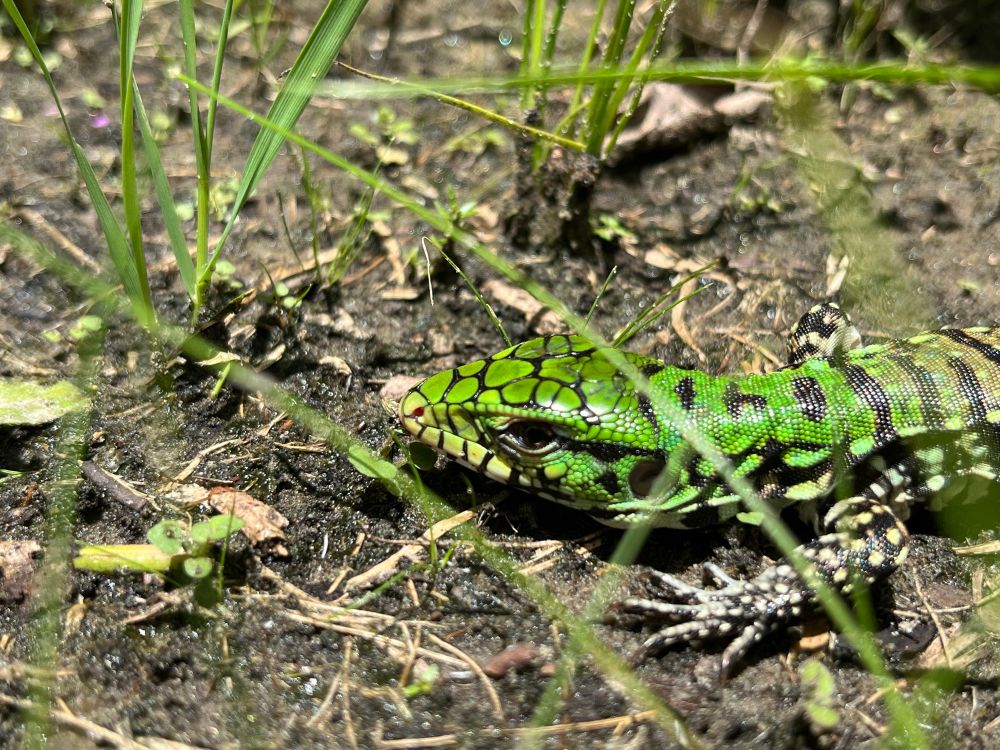
A close-up photograph of a juvenile tegu lizard (Salvator merianae) resting on the ground among grass and soil. The lizard’s vibrant green scales with black and cream-colored markings contrast with the earthy background. Sunlight filters through the grass, highlighting the intricate pattern on its head and body. The tegu appears alert, with its eyes focused and limbs positioned for movement.
26.01.2025 15:20 — 👍 2 🔁 0 💬 1 📌 0
Look at this beautiful baby tegu, Salvator merianae! This large Neotropical lizard, found across most of Brazil, can grow over a meter long. They are generalist reptiles that consume fruits and disperse seeds.
26.01.2025 15:20 — 👍 5 🔁 0 💬 2 📌 0
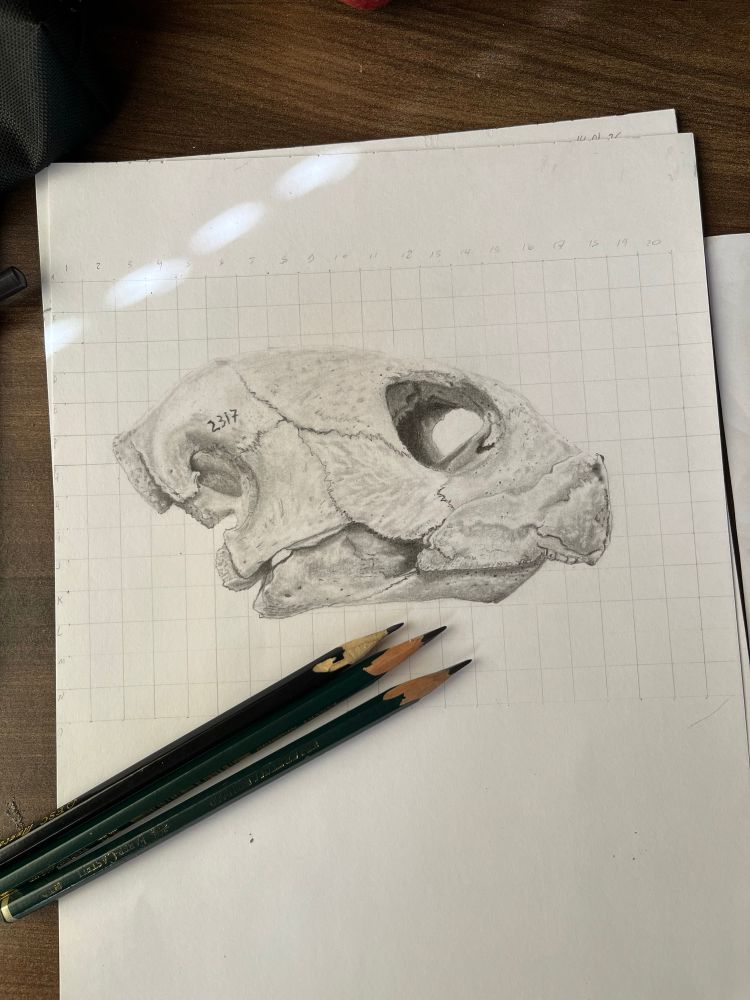
Just finishing a graphite study of a turtle skull for my scientific illustration class. Exploring anatomy and shading techniques!
18.01.2025 22:22 — 👍 3 🔁 0 💬 0 📌 0
Neotropical otter at Bolaxa stream, Southern Brazil.
05.12.2024 17:15 — 👍 6 🔁 0 💬 0 📌 0
Capybara ride: evidence of whole aquatic plant dispersal
Abstract: The functioning of diverse ecosystems relies on the dispersal processes facilitated by...
Our recent study shows that capybaras can disperse whole aquatic #plants via fur & gut! 🌿
#wetlands #biodiversity
Discover more about these semiaquatic giants👇
📖 doi.org/10.1590/1676-0611-BN-2024-1629
23.11.2024 12:48 — 👍 2 🔁 0 💬 0 📌 0
Showcasing new research from the publishing portfolio of the Ecological Society of America, the world's largest community of ecologists @ecologicalsociety.bsky.social
Nature Ecology & Evolution publishes research and comment across the entire breadth of ecology and evolution, including both pure and applied topics. nature.com/natecolevol
A group+platform for facilitating exchange and collaborations in this wide-ranging, cross-disciplinary field of research. Posts are not endorsements.
https://t.co/cslvXtGzNI
Ecologist working on 🏝️#islandecology #tropicalecology #ecologicalnetworks #interactions 🐦🐢🫐#seeddispersal #restoration 👽#biologicalinvasions #communityecology 🌍#globalchange
📍Postdoctoral researcher at @IMEDEA_UIB_CSIC
A career network featuring science jobs in academia and industry.
Visit our platform at www.science.hr
Biologist. Green thumb by nature, unraveling the secrets of plant ecology one leaf at a time 🌱🦆.
PhD student at EBD-CSIC
uma cientista cansada
I'm a sociologist and political economist writing about Latin America, internationalism, ecosocialism and just transitions. Also Head of Research @alameda.institute.
Find me:
🟠 the.ecocene.blog
🟤 sabrinafernandes.com
Professional Landscape Artist
Represented by fine art galleries across Canada
https://monica-morrill.jimdosite.com/ https://monicamorrillart.etsy.com
Intergovernmental treaty providing frameworks for the conservation & wise use of wetlands & their resources.
www.ramsar.org
Paleontóloga 🦴🦖🦕, Profa. no Departamento de Geologia ⚒️ da UFRN e Divulgadora Científica 🧪 | Professor of Paleontology at UFRN, Brazil, and Science Communicator | ✨Opinions are my own✨ | #UbirajaraBelongstoBR
🦋elder #4,156
https://linktr.ee/alinemghilardi
Professor @Mizoram University, Department of Forestry, Aizawl, India
Asso Ed @FunEcology
SeedArc Coordinator Team Member: http://www.unioviedo.es/seedarc/
Fellow: @AvHStiftung | @jsps_sns
📖 #SeedEcology #Forestry #CitizenScience
Postdoctoral fellow in the Keeling Lab @ UBC studying marine protistan symbionts. Previously: del Campo Lab & Coral Reef Futures Lab 🐠🪸🌊🧬 He/Him 🏳️🌈
The ISSS is committed to fostering and promoting research, education and communication in #SeedScience 🫘🌱🧪.
Posts by our Communications Officer: @caordonezparra.bsky.social. For more information, visit our official website: https://seedscisoc.org
Scientific illustrator and wildlife artist.
Former scientist - biologist
Commissions: lazaroillustration@gmail.com
Prints store: https://www.inprnt.com/gallery/javi_lazaro/
Web: https://www.lazaroillustration.com/
Human artist. No AI art.
Biologist interested in biodiversity dynamics #ecol #evol #biogeogr #modelling. Prof for Ecological Modelling @BIOB-I @unibonn.bsky.social, senior editor @consbiog. he/him 🏳️🌈🇧🇷🇩🇪 opinions my own
Incoming assistant professor at University of Maryland, College Park • NSF PRFB postdoc • PhD from Bhattacharya lab @RutgersU • Passionate about algae / protists + genomics + evolutionary biology + microscopy • vanettenlab.org #NewPI
Opinions are my own.
PhD candidate 👩🔬 at @fisioklima.bsky.social research group at UPV/EHU. Studying the importance of the biodiversity of arbuscular mycorrhizal fungi for sustainable agriculture🌱🦠🔬
PhD in Biology 🐦🌍🦅 | Urban Ecology, Plastic Pollution & Wildlife Conservation | Head of the “Study and Conservation of Biodiversity” Research Group at the European University of Madrid
Together we can create a Blue Wave and overcome this fascist mess! Wetland Scientist; botanist; animals, gardening and permaculture; deeply interested in healing our relationship with nature and culture + steps for reparations and reconciliation.



